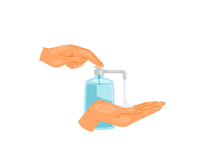Gemifloxacin
Introduction
Gemifloxacin is an antibiotic medicine that belongs to the fluoroquinolone class. It is commonly prescribed to treat bacterial infections, especially respiratory tract infections like pneumonia and bronchitis. Gemifloxacin works by killing or stopping the growth of bacteria, making it effective in managing infections caused by susceptible organisms. It is not effective against viral infections such as the common cold or flu. This medicine should be taken only under medical supervision to avoid misuse or resistance.
Medicine Not Available for Gemifloxacin
Uses of Gemifloxacin
- Treats bacterial infections of the lungs, such as pneumonia and acute bronchitis
- Effective against various bacterial infections, including sinus infections and skin infections
- Prescribed for infections caused by susceptible strains of bacteria
How Gemifloxacin Works
Gemifloxacin works by inhibiting bacterial DNA gyrase and topoisomerase IV, two enzymes that are crucial for bacterial DNA replication and repair. By blocking these enzymes, Gemifloxacin prevents the bacteria from multiplying and repairing their DNA, leading to bacterial death and the resolution of the infection.
Benefits of Gemifloxacin
- Effective in treating respiratory infections, including pneumonia and bronchitis
- Works against a wide range of bacterial infections, offering a broad spectrum of activity
- Provides an alternative treatment option for infections resistant to other antibiotics
- Helps reduce the severity and duration of bacterial infections when used appropriately
How to Take Gemifloxacin
Gemifloxacin is typically taken orally in the form of a tablet. The usual dosage is one tablet once a day, but your healthcare provider will determine the correct dosage based on the type and severity of the infection. It is recommended to take Gemifloxacin with or without food. Be sure to complete the full course of treatment as prescribed, even if you start feeling better before finishing the medication, to ensure the infection is fully treated.
Type of Dosage Available
- Tablets (320 mg)
Side Effects of Gemifloxacin
- Nausea or vomiting
- Diarrhea
- Headache or dizziness
- Insomnia
- Skin rash
- Tendonitis or tendon rupture (rare)
- Severe allergic reactions, including swelling of the face or throat
Safety Advice
- Drink plenty of fluids while taking Gemifloxacin to prevent dehydration
- Avoid exposure to sunlight or tanning beds, as Gemifloxacin can increase sensitivity to light
- Do not take Gemifloxacin with certain medications, such as antacids or sucralfate, as they may interfere with its absorption
- Consult your healthcare provider if you have a history of tendon problems, as Gemifloxacin can increase the risk of tendonitis or tendon rupture
- If you experience any severe side effects, such as chest pain, shortness of breath, or signs of a severe allergic reaction, seek medical attention immediately
Frequently Asked Questions (FAQs)
Q. What is Gemifloxacin used for?
A. Gemifloxacin is used to treat bacterial infections, including respiratory infections like pneumonia and bronchitis, as well as skin infections and sinus infections.
Q. How does Gemifloxacin work?
A. Gemifloxacin works by inhibiting bacterial DNA gyrase and topoisomerase IV, enzymes essential for bacterial DNA replication and repair, leading to bacterial death.
Q. What are the side effects of Gemifloxacin?
A. Side effects can include nausea, diarrhea, headache, dizziness, rash, and in rare cases, tendonitis or tendon rupture. Severe allergic reactions are also possible.
Q. How should I take Gemifloxacin?
A. Take Gemifloxacin orally once a day, with or without food, as prescribed by your healthcare provider. Be sure to complete the full course of treatment.
Q. Can I take Gemifloxacin with other medications?
A. Consult your healthcare provider before taking Gemifloxacin with other medications, especially antacids or sucralfate, as they may interfere with its effectiveness.
Disclaimer : Zeelab Pharmacy provides health information for knowledge only. Do not self-medicate. Always consult a qualified doctor before starting, stopping, or changing any medicine or treatment.
Download India's most affordable pharmacy app
- Compare with medicine prices
- Save upto 90% on your medicine bills

Temperature Controlled storage and delivery

Regular Sanitization

Disinfected Packaging













 Added!
Added!